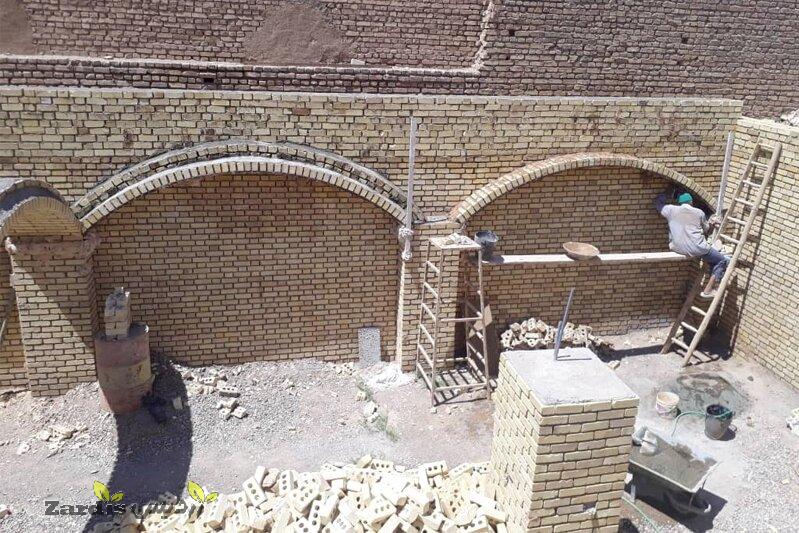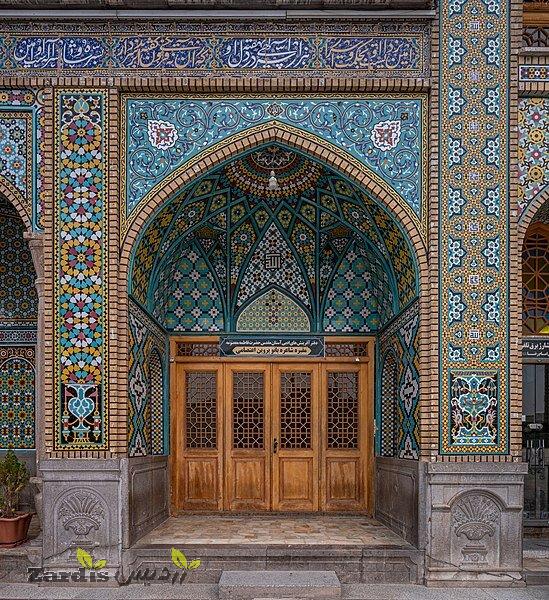TEHRAN – Haj Ali Mohammad Ab-Anbar, which is a traditional mudbrick cistern in the oasis city of Meybod, will be hosting a permanent handicrafts hub, Meybod’s tourism chief has said.
Restoration work has been commenced on the Pahlavi era (1925-1979) cistern to have it prepared to host a permanent handicrafts market and workshop when the refurbishment finishes, Mehrdad Zolfaqari said on Monday.
The restoration project involves repairing and strengthening walls, rooftops, and arches as well as landscaping and flooring, the official added.
It is planned to set up two handicraft workshops, a center for training, and seven stalls for selling handmade products in the southern area of the cistern, he noted.
There would also be live performances of handicrafts being produced, which are on the verge of extinction in the region, he explained.
Haj Ali Mohammad Ab-Anbar was inscribed on the national heritage list in 2008. The term Ab-Anbar is common throughout Iran as a designation for roofed underground water cisterns. It associates with water management systems in arid areas that are reliant on permanent springs or seasonal rainwater.
Such an underground reservoir or Ab-Anbar is part of the iconic qanat systems, which rely on snow-fed streams flowing down from surrounding mountains. Qanats, according to UNESCO, provide exceptional testimony to cultural traditions and civilizations in desert areas with an arid climate.
With 14 entries, Iran ranks first globally for the number of cities and villages registered by the World Crafts Council, as China with seven entries, Chile with four, and India with three ones come next. In January 2020, the cities of Shiraz, Malayer, and Zanjan and the village of Qassemabad were designated by the WCC- Asia Pacific Region, putting Iran’s number of world crafts cities and villages from ten to 14.
Shiraz was named a “world city of [diverse] handicrafts”. Malayer was made a global hub for woodcarving and carved-wood furniture. Zanjan gained the title of a “world city of filigree”. And Qassemabad village, which is nationally known for its traditional costumes, was also promoted to a world hub of handicrafts. Chador Shab, a kind of homemade outer garment for women, was, however, the main subject for the WCC assessment for the village.
The value of Iran’s handicrafts exports stood at $120 million during the first eleven months of the past Iranian calendar year 1399 (March 20, 2020 – February 18, 2021), Mehr reported. The country’s handicrafts exports slumped during the mentioned months in comparison to the same period last a year earlier due to the damage the coronavirus pandemic has inflicted on global trade.
Ceramics, pottery vessels, handwoven cloths as well as personal ornamentations with precious and semi-precious gemstones are traditionally exported to Iraq, Afghanistan, Germany, the U.S., the UK, and other countries.
ABU/AFM
Zardis news | The latest news of Iran and the world
تمامی حقوق مطالب برای "Zardis news"محفوظ است و هرگونه کپی برداری بدون ذکر منبع ممنوع می باشد.
طبق ماده 12 فصل سوم قانون جرائم رایانه ای کپی برداری از قالب و محتوا پیگرد قانونی خواهد داشت.







